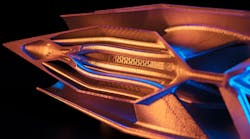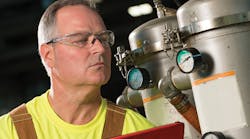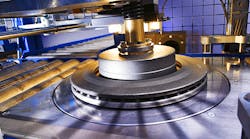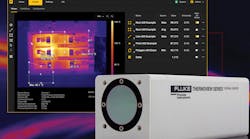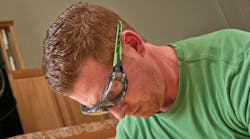The biannual Paris Air Show takes place this month, drawing wide attention to advances in aerospace technology, especially in terms of aircraft speed, navigational autonomy, and handling precision. But for aerospace engineers, the focus of aircraft design is frequently more fundamental. For them, there is a never-ending search for components and materials that are light and yet sturdy, tolerant of frequent high-heat cycles and able to endure extreme pressure. Of course, affordability is a selection factor, too – even in an industry that prices finished products in millions.
And so, in design centers and laboratories around the world researchers continue to identify and create better materials. If aerospace engineers later specify one of those materials, it becomes a project for manufacturers like foundries and diecasters to execute.
There is competition for those projects: aerospace engineers have shown a willingness to adopt new manufacturing technologies as well as new materials to achieve their goals. Recently, Boeing assigned a purchase order to Norsk Titanium for a supply 3D-printed, structural titanium components for the 787 Dreamliner, produced by a proprietary rapid plasma deposition process. Additive manufacturing, or 3D printing, has become a notable alternative for aerospace engineers, who are impressed with the possibilities for geometrical and structural precision. Also, the 3DP sector has appealed to aerospace engineers with new specialty materials and customized material properties. GE Aviation and other jet-engine developers have been among the most willing adopters of additive manufactured components.
And this is why the effort to develop new materials, or optimize established alloys, is matter of considerable concern for metalcasters: every variable in their melting, pouring, molding, or heating-treating processes is open for reevaluation at all times.
For example, the Lightweight Innovations for Tomorrow program, a consortium of industrial and academic partners, has several aerospace-focused programs underway, including efforts to reduce microscopic air bubbles in vacuum-diecast parts, modeling long-range performance of aluminum-lithium alloys, and developing a database and computer models that will predict corrosion in aluminum alloys. Still another LIFT project is working specifically with aerospace titanium alloys, to develop computer models that will cut the time and cost of materials development, component design, and manufacturing by 50%. New computational tools also will be developed.
A separate material research project published recently demonstrates what, and how, these efforts can influence aerospace engineering. Researchers at Ohio State University reported they have found a way to “deactivate” microscopic defects (known as “nano twins”) to improve the high-temperature performance of superalloys for turbofan engines. The defects under study form after solidification, as the finished parts are in place and performing the functions they have been custom designed to do — but contribute to structural deformation under heat and pressure. Researchers Michael Mills and Timothy Smith reported that their efforts to customize the alloys’ composition and then expose it to high heat and pressure could show how to prevent nano twins from forming, and even improve the strength of an alloy.
Mills and Smith call their technique “phase transformation strengthening.” In a report published Nature Communications they revealed that they eliminated the formation of nano twins and cut alloy deformation by half. “We found that increasing the concentrations of certain elements in super-alloys inhibits the formation of high-temperature deformation twins, thereby significantly improving the alloys’ high temperature capabilities,” according to Mills a professor of materials science and engineering at OSU.
Their team took a fundamental approach to superalloy design, aiming to address what Mills described as a lack of “quantitative, comprehensive understanding” of how these high-tech materials perform under high stress.
They subjected two superalloys to thousands of pounds of pressure and high heat (1,400°F) to simulate the effects of a jet engine performance, and then examined the alloys’ crystal structures and ran computer models of mechanical behavior at the alloys’ atomic level.
In both alloys, temperature and pressure caused nano twin faults to develop within the superalloy crystals. Further, they found that material composition in and around the faults changed: some elements (e.g., nickel, aluminum) diffused away from the defects, while others diffused into them.
The tendency for particular atoms to diffuse into the nano twin faults depends on the overall composition of the alloy, the researchers found, which creates a new challenge to engineer alloy compositions in order to promote or avoid particular phase transformations. For the manufacturers that will receive these results and work to put them into action, the changes are no less fundamental.

